If you have made the decision to sell your motorcycle, whether because you want to upgrade or because you have different priorities, knowing where to sell your bike is as important as knowing what to ask for it.
Selling your bike is already a difficult enough decision in many cases, so there is no need for the added stress of knowing the best place to sell your motorcycle. These tips can help you find the perfect place to sell your bike and will provide you with some tips that could make the process go more smoothly. You can find a few more tips on how to sell your motorcycle here.
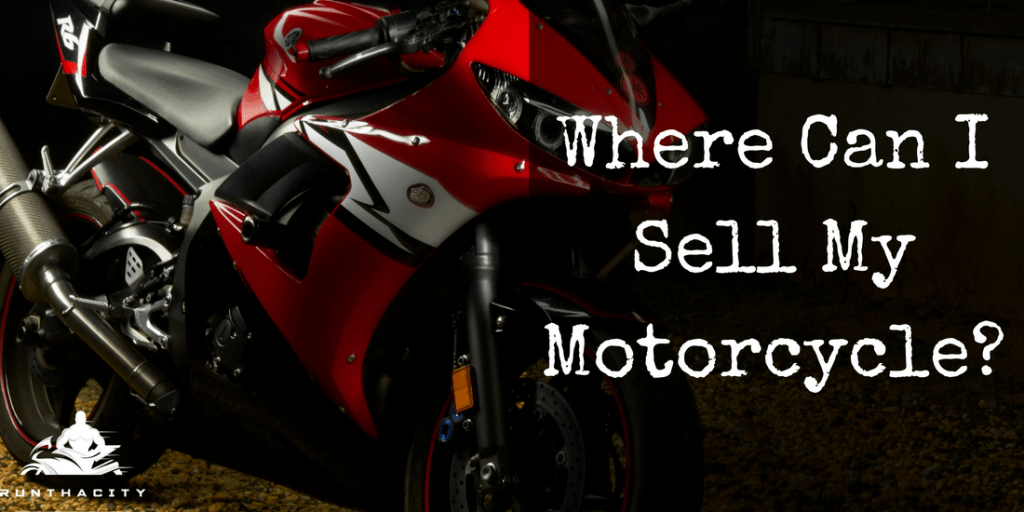
Where Can I Sell My Motorcycle Offline?
Selling a motorcycle offline may not be as difficult as you think. You can place a “For Sale” sign on the bike when it is parked in your yard and it is possible someone riding by may decide it is the perfect bike for them. You can also take out an ad in the classified section of your local newspaper, although you will need to pay for the ad whether the bike sells or not. If there is a bulletin board in your neighborhood where people post about lost pets or yard sales, ask if you can post a sign about your motorcycle.
Tell your friends, family and co-workers that your bike is for sale. They may know someone who is in the market.
If you are selling your bike because you want to upgrade, talk to the dealer about trading in your old bike on a new one. Keep in mind that a dealer may offer you less for the bike than you could get if you sold it yourself, but it would eliminate the hassle of selling it yourself.
Offline Selling Options:
Dealership: Selling your motorcycle to a dealership can be a convenient option if you’re looking to trade it in for a new model. While you may receive a lower offer compared to selling it privately, it eliminates the hassle of handling the sale yourself.
Local Newspaper: Placing an ad in the classified section of your local newspaper can reach potential buyers in your community. However, you’ll need to pay for the ad, regardless of whether your bike sells or not.
Front Lawn: Putting up a “For Sale” sign on your bike while it’s parked in your yard might catch the eye of passersby, leading to potential buyers.
Flea Market or Motorcycle Show: Participating in flea markets or motorcycle shows can expose your bike to a targeted audience of enthusiasts who might be interested in purchasing it.
Bulletin Boards: Check if there are bulletin boards in your neighborhood where you can post a sign about your motorcycle for sale.
Advantages of Offline Selling:
When you sell your motorcycle offline, one cool thing is that you can reach folks right in your own community. You might get lucky with someone riding by, checking out your “For Sale” sign, and thinking, “Hey, that’s the perfect bike for me!” Plus, you get to have those face-to-face interactions with potential buyers. It’s a chance to show off your bike in person, talk about its features, and make a more personal connection.
Disadvantages of Offline Selling:
Now, the downside of selling offline is that your audience is more limited compared to the vast world of the internet. You’re sticking to your local turf, and not everyone in your community might be interested in buying a motorcycle at that moment. It can take some time and effort to find the right buyer, and you might need to keep at it for a while.
Also, if your motorcycle is kind of niche or unique, you might not find the right audience nearby. It’s like trying to sell an old-school chopper in a town that’s all about sportbikes. You might not find the perfect match for your bike’s awesomeness.
Where Can I Sell My Motorcycle Online?
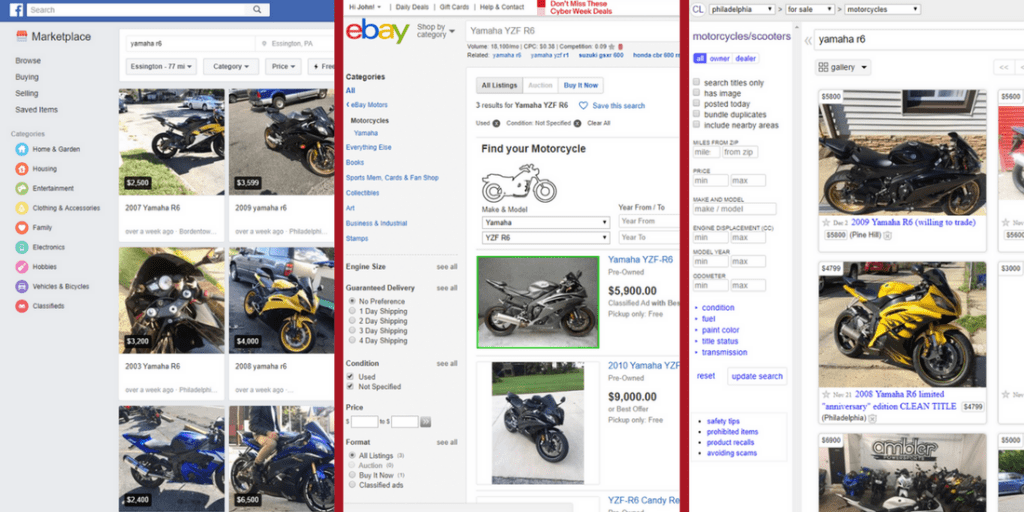
There are many different online options you can use to sell your bike. Craigslist is a free online advertising service, but keep in mind that some of the people who use the service are not above-board. If a buyer wants to purchase the bike from a Craigslist ad, insist on cash or certified funds at the time of the sale.
Ebay is another option for selling your bike, especially if it is unique or hard-to-find. You do not pay for listing your bike on Ebay until it sells and the buyer will pay for any shipping costs. It could be difficult, however, to find a company that will ship your bike so you want to research shipping prior to listing the bike for sale.
Online Selling Options:
Craigslist: Craigslist is a popular online classifieds platform where you can post your motorcycle ad for free. However, exercise caution as there might be some scammers and fraudsters on the platform. Insist on cash or certified funds for a safe transaction.
eBay: eBay offers a broad audience, making it suitable for unique or hard-to-find motorcycles. You only pay a fee when your bike sells, and the buyer covers shipping costs. Research shipping options before listing your bike.
Facebook Marketplace: Facebook Marketplace has gained popularity for buying and selling motorcycles and parts. With a large user base, it’s an accessible platform to reach potential buyers.
Facebook Groups: Joining motorcycle-specific Facebook groups can connect you with enthusiasts interested in your type of bike.
Motorcycle-Specific Websites: Platforms like Motorcycle.com, CycleTrader, and RumbleOn focus on motorcycles, ensuring your ad reaches a targeted audience.
Facebook Marketplace
Recently Facebook Marketplace has become really popular for buying and selling motorcycles and motorcycle parts. You can discover bikes for sale near you. Easy to use on your phone or your desktop, and most people already have a Facebook account.
Take a look at a few other places you can sell your sportbike online:
The Best Apps to Sell My Motorcycle

One option for selling your bike online, designed specifically for buying or selling motorcycles, is RumbleOn. The site is available as a mobile app that allows you to put in all the info about your bike, take photos and upload to the site. RumbleOn sends you a Cash Offer Voucher that is good for three days. If you agree, they come get the bike and handle all the paperwork.
CycleTrader is another app that allows you to sell motorcycles and also includes reviews available online.
These apps are available in the Apple or Google Play Store:
Google Play Store Apps
On Apple Itunes Apps
Advantages of Online Selling:
Selling your motorcycle online opens up a whole world of possibilities! You get a way bigger audience, reaching potential buyers from different corners of the globe. It’s like your bike is getting the red carpet treatment, and people from all over can admire its beauty.
And the best part? You can do it all from the comfort of your own home, sipping on a cup of coffee. No need to put on pants or leave the house. Just hop online, snap some pics of your awesome bike, and let the internet do its magic. It’s super convenient, accessible 24/7, and you can connect with buyers from anywhere with an internet connection.
The online world gives you cool options for targeted advertising too. If you’ve got a sporty beast, you can hit up those motorcycle-related websites and social media groups where fellow speed enthusiasts hang out. Talk about getting your bike in front of the right crowd!
Disadvantages of Online Selling:
But hey, the internet isn’t all rainbows and unicorns. There are a few things to watch out for when selling online. Scammers and fraudsters like to lurk in the shadows of certain platforms, so you’ve got to be vigilant. Don’t worry though, we’ll tell you how to deal with those bad apples in a bit.
Also, dealing with inquiries and negotiations online can sometimes feel like you’re running a 24/7 customer service hotline. It can take up some of your time, replying to messages and answering questions. But hey, it’s all part of the game, right?
Oh, and shipping logistics, that can be a bit of a headache. Especially if your motorcycle is a big boy. You’ve got to figure out how to get it from point A to point B without a scratch. But don’t worry, where there’s a will, there’s a way! Consider A1Autotransport to transport your vehicle.
Warning about Scams and How to Avoid Them:
Now, let’s talk about those pesky scammers. They’re like the gremlins of the internet, always trying to cause trouble. But don’t worry, we’ve got some tips to keep you safe from their tricks.
First things first, when someone wants to buy your bike, insist on cold, hard cash or certified funds. No personal checks or money orders. Those things can be faker than a unicorn.
If you’re meeting up with a potential buyer, be smart about it. Choose public places with cameras or bring a buddy along for backup. Safety first, always!
And before you hand over your precious motorcycle, make sure any certified funds are legit and safely cleared in your account. No funny business!
Remember, this is about selling your bike, not your life story. Be cautious about sharing personal info with potential buyers. Stick to talking about your motorcycle and its amazing features.
One last thing – do some online sleuthing. Research the buyer’s profile and reputation if you can. It’s like giving them a background check to make sure they’re the real deal.
With these tips in your back pocket, you’ll be a scam-fighting superhero, ready to conquer the online selling world! Stay safe and sell that motorcycle like the boss you are!
Avoid Scams When Purchasing a Mortocycle With This Checklist
Insist on Cash or Certified Funds: Avoid accepting personal checks or money orders, as they can be forged or canceled. Insist on cash or certified funds for a secure transaction.
Meet in Safe Locations: If meeting with a potential buyer, choose public places with surveillance cameras or bring a friend along for added safety.
Verify Payment: Before handing over the motorcycle, ensure that any certified funds are legitimate and have cleared in your account.
Don’t Share Personal Information: Be cautious about sharing personal information with potential buyers. Stick to discussing the motorcycle details.
Research Buyer’s Information: If selling online, research the buyer’s profile and reputation if possible to gauge their credibility.
By following these guidelines, you can reduce the risk of falling victim to scams and ensure a safer selling experience.
In conclusion, selling your motorcycle can be a challenging decision, but with the right approach and platform, you can find the perfect buyer. Offline options offer localized reach and personal interactions, while online platforms provide access to a broader audience. To safeguard against scams, practice caution, and follow best practices when dealing with potential buyers. Good luck with your motorcycle sale!
If you want more information on selling your motorcycle or need tips on getting the best price for your bike, subscribe to our YouTube channel.
You Might also like
-
The Thrill of Speed vs. Reality: Can You Live with a Superbike as a Daily Driver?
Speed Demons for Everyday Riders? Exploring the Practicalities of Owning a Superbike
The roar of the engine, the wind whipping past your helmet, and a blur of scenery – the allure of a superbike’s exhilarating speed is undeniable. But for many riders, the question arises: can you live with a superbike as a daily driver? This article delves into the thrilling reality of owning a superbike for everyday use, exploring both the exhilarating aspects and the practical challenges.
Key Takeaways
- Superbikes offer exhilarating speed and unforgettable experiences, but come with challenges like lower fuel efficiency, less comfort, higher maintenance costs, and reduced maneuverability compared to standard motorcycles.
- Consider individual needs and preferences before deciding if a superbike is suitable for daily driving.
- Explore alternatives like sport touring models or used superbikes for a balance between performance and practicality.
- Prioritize safety and experience to ensure responsible and enjoyable riding.
Comparison Table: Superbike vs. Standard Motorcycle for Daily Use
Feature Superbike Standard Motorcycle Performance High Moderate Fuel Efficiency Low Moderate to High Comfort Low Moderate to High Maintenance Costs High Moderate Maneuverability Low High Comparison Table: Superbike vs. Standard Motorcycle for Daily Use
The Allure of Speed:
Superbikes, also known as fastest production motorcycles or fastest sportbikes, boast incredible top speeds and lightning-fast acceleration. These machines are the pinnacle of engineering, pushing the boundaries of performance and embodying the thrill of the ride. For many riders, owning a superbike fulfills a lifelong dream, offering an unmatched experience on the open road.
The Practical Realities:
However, the reality of owning a superbike for everyday use can be quite different from the initial excitement. Here are some key factors to consider:
- Fuel Efficiency: Superbikes are notorious for their fuel-thirsty nature. Their high-performance engines often translate to lower fuel economy compared to standard motorcycles. This can be a significant financial consideration, especially with rising fuel costs.
- Comfort: Superbikes are designed for performance, not comfort. Aggressive riding positions with low handlebars and rearset footpegs can lead to fatigue and discomfort on longer rides. Additionally, the lack of wind protection can be unpleasant, particularly in harsh weather conditions.
- Maintenance Costs: High-performance machines often come with higher maintenance costs. Regular servicing, including frequent tire changes and specialized parts, can be more expensive than with standard motorcycles.
- Maneuverability: Superbikes are designed for speed and handling on racetracks, not navigating city streets. Their larger size and heavier weight can make them less maneuverable in tight spaces and stop-and-go traffic.
Beyond the Numbers:
While these practical considerations can be daunting, it’s important to remember that owning a superbike is not just about the numbers on a spec sheet. It’s about the emotional connection you have with the machine, the sense of freedom it offers, and the unforgettable experiences it creates.
Finding the Balance:
Ultimately, the decision of whether or not a superbike is suitable for daily driving comes down to individual needs and preferences. If you prioritize fuel efficiency, comfort, and practicality, a standard motorcycle or a sport touring model might be a better fit. However, if you’re willing to embrace the challenges and embrace the thrill of owning the fastest street-legal motorcycle, a superbike can be a rewarding experience.
Additional Considerations:
- Alternatives: Consider exploring the fastest-liter bike 2023 options that offer better fuel efficiency and comfort while still retaining some of the performance characteristics.
- Used Superbikes: Purchasing a used superbike can be a cost-effective option, allowing you to experience the thrill without breaking the bank.
- Riding Experience: Ensure you have the necessary skills and experience to handle the power and performance of a superbike before making a purchase.
6 FAQs About Superbikes as Daily Drivers
6 FAQs About Superbikes as Daily Drivers
1. Are superbikes good for commuting?
Superbikes can be challenging for daily commutes due to lower fuel efficiency, less comfort, and potential difficulties in stop-and-go traffic. Consider alternative options like sport touring models for better practicality.
2. How much does it cost to maintain a superbike?
Superbikes generally have higher maintenance costs due to frequent servicing, specialized parts, and high-performance tires.
3. Can you make a superbike more comfortable for daily use?
While limited, some aftermarket accessories like handlebar risers and windshields can slightly improve comfort on longer rides.
4. What are some alternatives to superbikes for daily driving?
Sport touring models offer a good balance between performance and comfort, making them suitable for both spirited riding and everyday commutes.
5. Is it dangerous to ride a superbike as a daily driver?
Superbikes require a higher level of skill and experience due to their powerful engines and aggressive handling. Ensure you have adequate training and practice before riding one regularly.
6. What’s the best way to decide if a superbike is right for me?
Carefully assess your needs, priorities, and riding experience. Consider taking test rides on different bike types before making a decision.
Facts & Statistics: Superbike Market and Daily Riding
- The global superbike market size was valued at USD 5.2 billion in 2022 and is expected to grow at a CAGR of 4.1% from 2023 to 2030. (https://www.grandviewresearch.com/industry-analysis/motercycles-market-report)
- Only 20% of motorcycle owners commute to work on their bikes regularly in the United States. (https://msf-usa.org/)
- Comfort and fuel efficiency are two of the most important factors considered by motorcycle buyers when choosing a motorcycle for daily use. (https://powersportsbusiness.com/news/2023/08/03/mic-motorcycle-segment-up-through-q2/)
By carefully weighing the pros and cons, and considering alternative options, you can make an informed decision that aligns with your riding style and lifestyle. Remember, the fastest motorcycle on the market isn’t always the best fit for every rider. Choose a bike that allows you to experience the joy of riding, be it a superbike in occasional bursts or a more practical option for everyday use.
-
My First Motovlog
Hi Everyone! This is my first motovlog! I’m riding a 2004 Yamaha YZF-R6. Don’t forget to subscribe and comment!!
Read More -
What Every Rider Should Know About Road Rash
Road rash isn’t a punchline to a joke about bad motorcycle handling or old video game. Road rash, also called “friction burn,” is a serious injury. The severity of the wound is measured by degrees, the same as you would a chemical or fire burn. Since the skin is the largest organ of our bodies, getting road rash opens you up to other vulnerabilities, such as infection. But there is more to understand about road rash than these points.
Let’s look at this serious injury that can happen to anyone and learn how to classify and treat various types of road rash.
The Different Types of Road Rash
Not every bout of road rash is created equal. There are three main types of road rash:
- Avulsion – the skin is scraped away. Sometimes fat, muscle, and even bone will be exposed.
- Compression – where the body is caught between two objects, such as the motorcycle and the road. This results in bruising, broken bones, and damaged muscle.
- Open wound – usually require stitches. Open wound road rash might even require skin grafting.
Aside from the 3 different types, there are 3 degrees of damage:
- First degree – the first layer of the skin is red. Does not require medical treatment and will heal well enough on its own.
- Second degree – the first layer of skin, known as the epidermis, is broken. There can be bleeding and debris stuck in the wound. Usually requires little medical treatment and can heal with no scarring or lasting damage.
- Third degree – skin has been peeled away, leaving tissue, fat and sometimes bone exposed. Victims often need skin grafting.
The degrees of the crash depends on factors such as the force of the impact with the ground, the type of surface where the crash takes place, and whether safety gear was equipped.
Road rash will often occur in places that come in contact with the abrasive surface, either when attempting to catch oneself or when rolling or getting dragged. The outside of the legs, knees, palms, thighs, shoulders, and face are usually where road rash occurs.
Complications of Road Rash
Seek medical treatment immediately if you experience any of the following with road rash:
- Severe pain
- Inability to move affected region
- Cuts on the face that are larger than a ¼ inch
- Cuts on the body that are larger than a ½ inch
- Bleeding doesn’t stop
- Gaping wound remains opened with you relax the body
- Fat is visible in the exposed tissues
- Road rash is paired with other injuries, including possible concussion or broken bones.
Any open wound should be treated with antibiotics within six hours. Otherwise, you are at risk of infection.
Treatment and Recovery From Road Rash
Depending on the severity of the road rash, you can oftentimes treat it yourself. In that event, do the following:
- Stop any bleeding.
- Wash your hands with soap and water.
- Rinse the wound thoroughly.
- Wash the wound with soap, water, and then use some witch hazel.
- Apply a topical antibiotic.
- Bandage the wound.
- Change the dressing.
Note: During the recovery, the skin will undergo healing from the deepest layers to the top. It might get scabs. Do not pick the scabs. Instead, continue changing the bandages and applying topical antibiotics. Once the oozing stops, you can use petroleum jelly to keep the skin supple and lessen the scarring.
If you end up going to the doctor because of a deep wound, the medical professional might recommend using ibuprofen, a non-steroidal anti-inflammatory drug (NSAID), acetaminophen, or naproxen to deal with the pain.
Remember that because the skin has been opened by abrasion, you could be at risk for infection. Consider getting a tetanus shot. Tetanus boosters last 10 years, so if you had an injury where the epidermis or dermis of the skin has been injured, tetanus bacteria can enter the wound. At any time symptoms of infection begin, such as redness, swelling, warm or hot skin around the injury, tenderness, pain, or bloody ooze or yellowish pus, you could have an infection. Make sure to get to a doctor immediately.
Hopefully, you should now have an understanding of road rash and how serious it can be. Don’t ignore severe injuries after a fall. Drive safe and stay safe, so you can keep riding!


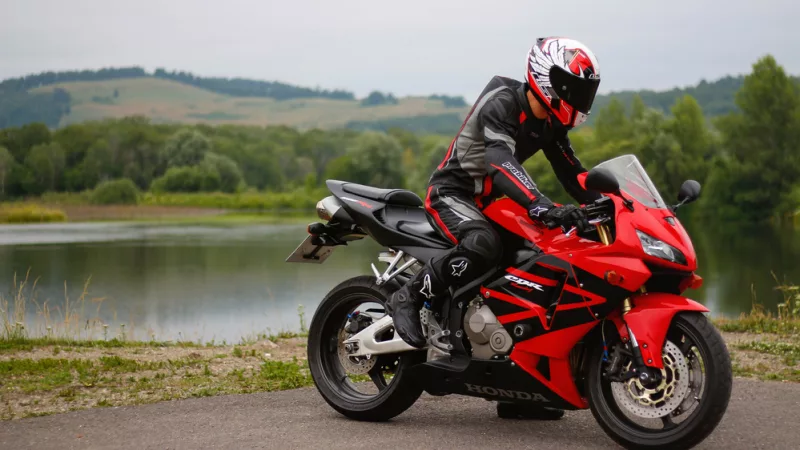
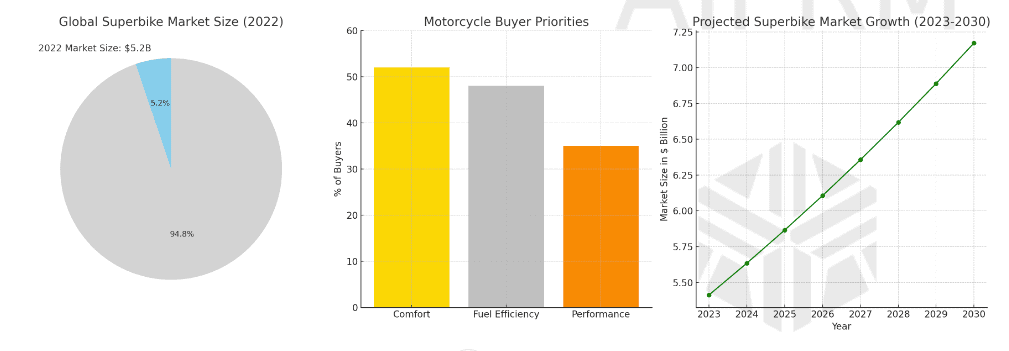

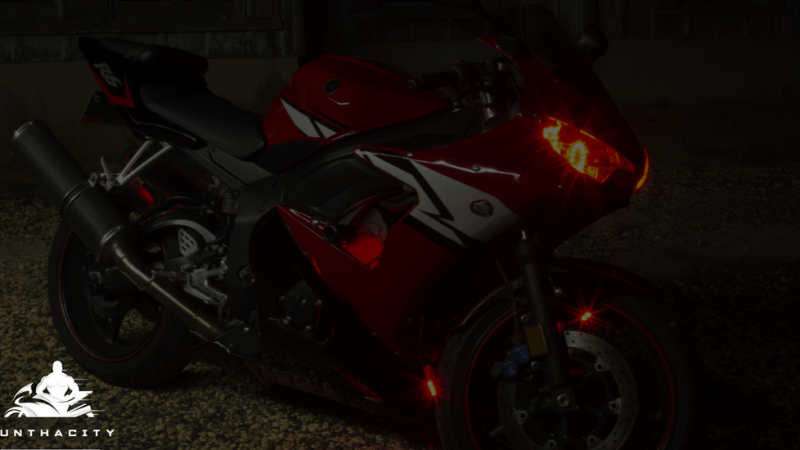
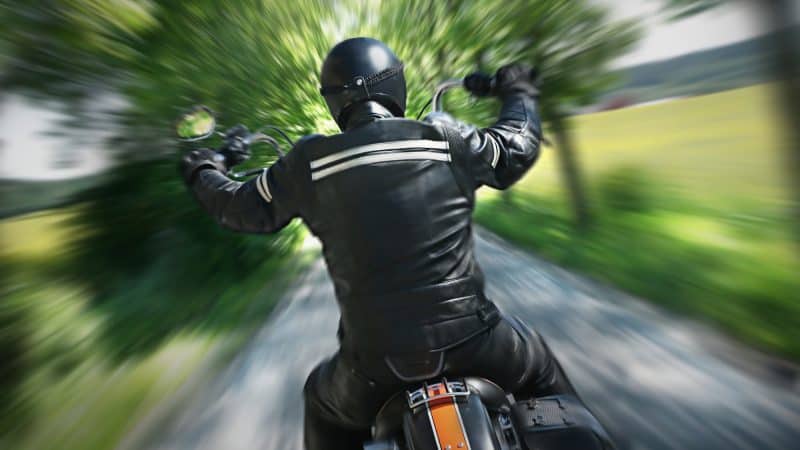




As a cashed up buyer I have been going through the adds looking for a motor bike. I find it very off putting to a point I won’t even consider the bike when sellers write things like no time wasters, no tire kickers, no test ride jockeys etc. If I turn up and don’t like the bike or consider it not the bike for me I wonder what their reaction will be. They may have the bike I would buy but with their attitude they display in their add I would never consider it.
After coming across this article I wanted to bring your attention to another option for selling a motorcycle online. The website Cash4Motorcycles.com offers free price quotes and they make selling easy. After getting a free online quote a seller can contact Cash 4 Motorcycles to schedule an appointment to have them come to the sellers location and purchase the motorcycle on the spot. There is no need for sellers to mail their title off and wait several days to have funds wired to their bank account. Once Cash 4 Motorcycles driver arrives at the sellers location they inspect the motorcycle, takes care of the paperwork and load up the motorcycle immediately. There is no need to make a separate appointment with a shipper to pick up the bike. The Cash 4 Motorcycles slogan says it all “We Make Selling Easy!”
Hi. I have a custom built 2014 HD sportster 1200xl with less than 6000 miles on it.
Roland Sands accessories, screaming eagle motor upended, carbon fiber pipe,tricked out!
It’s like a drag bike/racing bike all in one. Very,very fast!! I’m asking $9500.00, but I am willing to negotiate.
Urgent selling my Royal Enfield classic 350 cc my contact number is my WhatsApp number 9101864439
https://dailybikers.com/